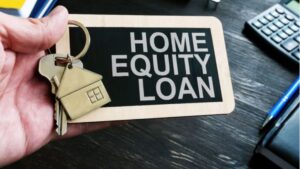Introduction
If you’re a homeowner looking to tap into your home’s value, a Home Equity Line of Credit (HELOC) might be just what you need. A HELOC allows you to borrow against the equity in your home, giving you access to funds for a variety of purposes. But before you dive in, it’s important to understand how HELOCs work, their benefits, and their potential risks. This comprehensive guide will cover everything you need to know about HELOCs.
What is a Home Equity Line of Credit?
A Home Equity Line of Credit (HELOC) is a revolving line of credit secured by your home’s equity. Unlike a traditional loan where you receive a lump sum, a HELOC allows you to borrow money as needed, up to a certain limit. It’s similar to a credit card but uses your home as collateral.
How Does a HELOC Work?
With a HELOC, you have a borrowing period (typically 5-10 years) where you can draw funds as needed. During this time, you may only need to make interest payments on the amount borrowed. After the draw period ends, you enter the repayment period (usually 10-20 years), where you pay back both principal and interest.
Benefits of a HELOC
One of the main benefits of a HELOC is its flexibility. You can borrow as much or as little as you need, and you only pay interest on the amount you use. HELOCs often have lower interest rates compared to other types of credit, such as credit cards. Additionally, the interest paid on a HELOC may be tax-deductible, although recent tax law changes have impacted this benefit.
Risks and Considerations
While a HELOC offers many advantages, it also comes with risks. The most significant risk is the variable interest rate, which can lead to higher payments if rates increase. Additionally, if you fail to repay your HELOC, you could lose your home to foreclosure. It’s also important to remember that borrowing against your home reduces your equity, which could impact future financial decisions.
HELOC vs. Home Equity Loan
A HELOC and a home equity loan both use your home’s equity as collateral, but they function differently. A home equity loan provides a lump sum with a fixed interest rate and set repayment term. In contrast, a HELOC offers revolving credit with a variable interest rate. The choice between the two depends on your financial needs and preferences.
Qualifying for a HELOC
To qualify for a HELOC, lenders typically look at your credit score, the amount of equity you have in your home, and your debt-to-income ratio. A higher credit score and more equity in your home increase your chances of approval. Lenders also want to ensure you can afford the payments, so a lower debt-to-income ratio is favorable.
Applying for a HELOC
Applying for a HELOC involves several steps. First, you need to gather necessary documentation, such as proof of income, tax returns, and information about your home. Then, you’ll submit an application to your chosen lender. The lender will evaluate your financial situation and conduct an appraisal of your home. If approved, you’ll receive a credit limit based on your equity and creditworthiness.
Understanding HELOC Terms and Conditions
HELOCs come with various terms and conditions that you should understand before borrowing. Interest rates are typically variable, which means they can change over time based on market conditions. Be aware of any fees associated with the HELOC, such as annual fees, application fees, or early closure fees. Also, pay attention to the specifics of the draw period, including how long it lasts and any rules about borrowing limits.
Using a HELOC Wisely
A HELOC can be a valuable financial tool if used wisely. Ideal uses include home improvements, consolidating high-interest debt, or funding significant expenses like education or medical bills. However, it’s crucial to avoid using a HELOC for frivolous spending, as this can lead to financial trouble. Always have a clear plan for how you will use and repay the borrowed funds.
Repayment Strategies
When it comes to repaying your HELOC, you have several options. Some borrowers choose to make interest-only payments during the draw period, but this can lead to higher payments later. Accelerating your repayment by paying more than the minimum can help reduce the overall interest paid and shorten the repayment period. Consider how your HELOC payments fit into your broader financial plan to avoid any surprises.
Tax Implications
The interest on a HELOC may be tax-deductible, but this depends on how you use the funds. The Tax Cuts and Jobs Act of 2017 limited the deduction to situations where the HELOC is used to buy, build, or substantially improve the home securing the loan. Always consult a tax professional to understand how a HELOC might impact your taxes.
Alternatives to HELOCs
If a HELOC doesn’t seem like the right fit, there are alternatives. Personal loans can provide unsecured funds without using your home as collateral. Cash-out refinancing allows you to refinance your mortgage for more than you owe and take the difference in cash. Other credit options, such as credit cards or traditional lines of credit, might also be suitable depending on your needs and financial situation.
Case Studies
To illustrate the practical use of HELOCs, let’s look at some real-life examples. One homeowner used a HELOC to renovate their kitchen, adding significant value to their home. Another used a HELOC to consolidate high-interest credit card debt, reducing their monthly payments and interest rates. However, not all stories are success stories. One borrower faced foreclosure after using a HELOC for luxury expenses and failing to repay it.
Conclusion
A Home Equity Line of Credit can be a powerful financial tool, offering flexibility and potentially lower interest rates. However, it’s essential to understand the risks and responsibilities involved. By carefully considering your financial situation and how you plan to use the funds, you can make an informed decision about whether a HELOC is right for you.
FAQs
What happens if I can’t repay my HELOC? If you can’t repay your HELOC, you risk foreclosure, as your home is the collateral for the loan.
Can I use a HELOC to buy another property? Yes, you can use a HELOC to buy another property, but it’s important to consider the risks and ensure you can manage the repayments.
How does a HELOC affect my credit score? A HELOC can impact your credit score positively if you make timely payments, but missed payments can negatively affect your score.
Is there a minimum or maximum amount I can borrow with a HELOC? The amount you can borrow depends on your home’s equity, your creditworthiness, and lender-specific criteria. There is usually a minimum draw amount, and the maximum is typically up to 85% of your home’s value minus what you owe on your mortgage.



















